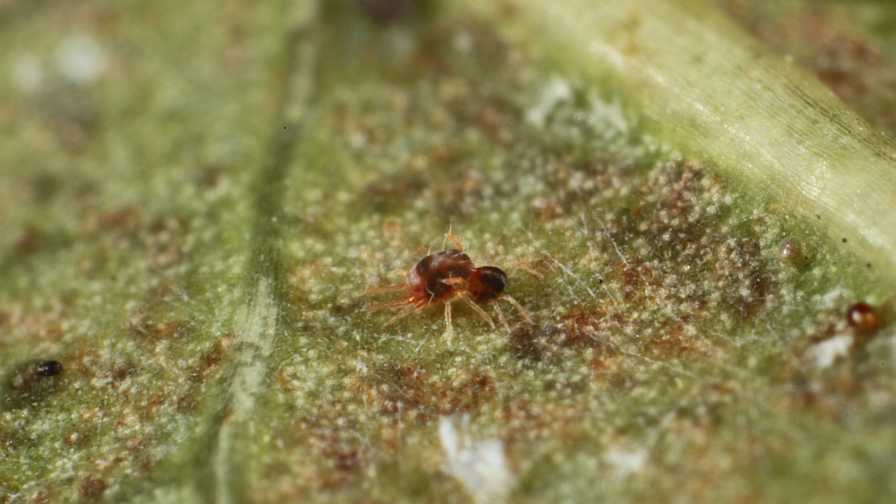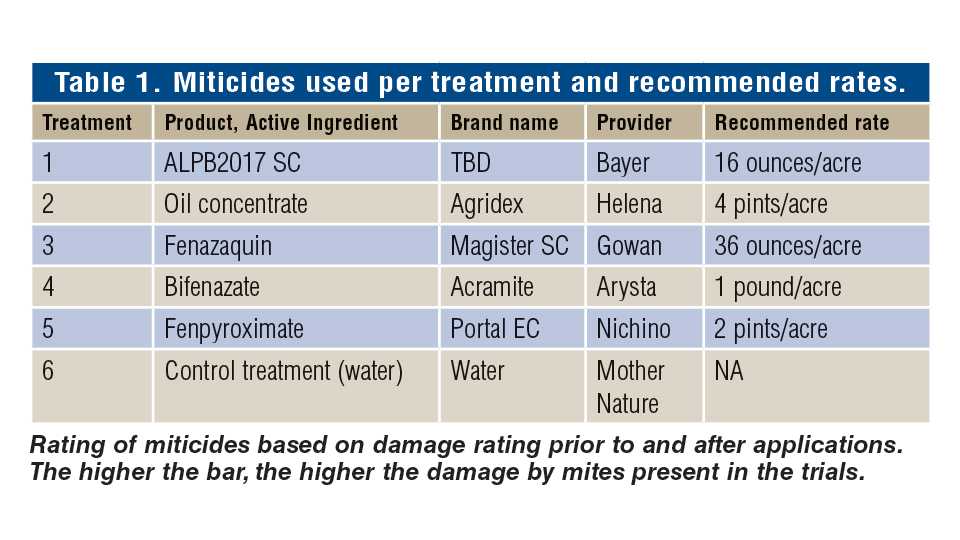Mites Taking a Bite Out of Florida Blueberries

The tiny red mite can produce damage on blueberry foliage in higher infestations.
Photo courtesy of UF/IFAS
Recently, there has been at outbreak of plant-feeding mites affecting blueberry production in Florida. It has been hypothesized the frequent sprays with pyrethroids and organophosphates insecticides to manage key pests, such as spotted wing drosophila and blueberry gall midge, have killed a significant number of natural enemies (predators) that typically control mite populations in blueberries.
Two mite species have been recorded in blueberries, southern red mite (Oligonychus ilicis) and false spider mite or flat mite (Brevipalpus yothersi). Prior to 2019, there were no miticides labeled for control of spider mites in blueberries. As a result, a field trial was conducted from early September to late October 2019 in a southern highbush blueberry planting to evaluate the effectiveness of several miticides.
Six treatments, including five miticides and a water (control), were evaluated. A randomized, complete block design with four replicates was used to evaluate the treatments. Each treatment plot was separated with 12 blueberry bushes (buffer rows). Field layout included 500-foot-long blueberry rows. Plants were approximately three years old (4- to 7-feet tall) and planted in single rows, 3 feet apart (~170 plants per row) with drip and, occasionally, overhead irrigation. Miticides were applied using the recommended rate with a CO2 sprayer (see chart below). Sampling of mites was conducted three days before miticide application (pre-treatment), as well as three, seven, and 14 days after miticide application.
The main mite found in the plot was southern red mite, accounting for more than 95% of the samples. As expected, mite injury increased significantly in the control plants (where no miticides were applied), damaging more than 80% of the leaves. The miticides, Magister (Fenazaquin, Gowan) and Portal (Fenpyroximate, Nichino) were the best-performing products, reducing mite population by more than 70% below the control after 14 days.
Magister received registration in highbush blueberries last year (2019) and Portal received registration earlier this year (February 2020). A new miticide, Kanemite (Acequinocyl, UPL) has just received registration for highbush (August 2020) and is currently being evaluated against southern red mites.











